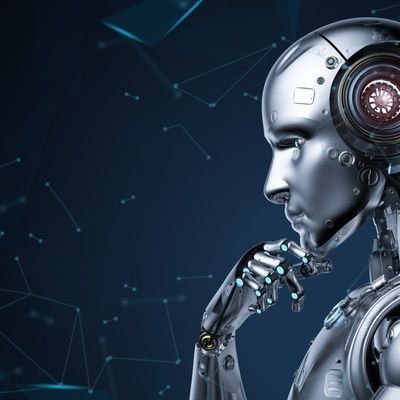
Deep learning is a subset of machine learning that focuses on algorithms inspired by the structure and function of the human brain. These algorithms, known as artificial neural networks, are designed to recognize patterns, learn from data, and make decisions. Deep learning has gained significant attention due to its ability to handle large amounts of data and its effectiveness in a variety of complex tasks. This article explores the fundamentals of deep learning, its applications, and the transformative impact it has had across different industries.
Fundamentals of Deep Learning
1. Artificial Neural Networks (ANNs):
– The core component of deep learning is the artificial neural network, which consists of layers of interconnected nodes (neurons). Each node processes input data and passes the result to the next layer.
2. Deep Neural Networks (DNNs):
– A neural network with multiple layers between the input and output layers is known as a deep neural network. These layers enable the network to learn hierarchical representations of data, which improves its ability to recognize complex patterns.
3. Training and Learning:
– Deep learning models are trained using large datasets. The training process involves adjusting the weights of the connections between neurons to minimize the error in the model’s predictions. This is typically done using algorithms such as backpropagation and optimization techniques like stochastic gradient descent.
4. Activation Functions:
– Activation functions introduce non-linearity into the network, allowing it to learn more complex patterns. Common activation functions include ReLU (Rectified Linear Unit), sigmoid, and tanh.
5. Loss Functions:
– Loss functions measure the difference between the predicted output and the actual output. The goal of training is to minimize this loss. Common loss functions include mean squared error for regression tasks and cross-entropy loss for classification tasks.
Applications of Deep Learning
1. Image and Video Analysis:
– Deep learning has revolutionized the field of computer vision, enabling machines to understand and interpret visual data. Applications include:
– Object Detection: Identifying and localizing objects within an image or video.
– Image Classification: Categorizing images into predefined classes.
– Face Recognition: Identifying individuals based on facial features.
– Medical Imaging: Assisting in the diagnosis of diseases by analyzing medical images such as X-rays, MRIs, and CT scans.
2. Natural Language Processing (NLP):
– Deep learning models have significantly improved the ability to understand and generate human language. Applications include:
– Machine Translation: Translating text from one language to another.
– Sentiment Analysis: Determining the sentiment expressed in a piece of text.
– Speech Recognition: Converting spoken language into written text.
– Text Generation: Creating human-like text based on given input.
3. Autonomous Vehicles:
– Deep learning is a key technology behind the development of self-driving cars. Applications include:
– Object Detection and Recognition: Identifying pedestrians, vehicles, traffic signs, and other objects on the road.
– Path Planning: Determining the optimal route for the vehicle to follow.
– Sensor Fusion: Combining data from multiple sensors (e.g., cameras, LiDAR, radar) to create a comprehensive understanding of the vehicle’s environment.
4. Healthcare:
– Deep learning has numerous applications in healthcare, improving diagnostics, treatment, and patient care. Applications include:
– Predictive Analytics: Forecasting patient outcomes and disease progression based on historical data.
– Personalized Medicine: Tailoring treatments to individual patients based on genetic information and medical history.
– Drug Discovery: Identifying potential new drugs by analyzing biological data and predicting the effects of chemical compounds.
5. Finance:
– Deep learning is transforming the finance industry by enhancing decision-making and improving efficiency. Applications include:
– Algorithmic Trading: Using models to make trading decisions based on market data.
– Fraud Detection: Identifying fraudulent transactions by analyzing patterns in financial data.
– Credit Scoring: Assessing the creditworthiness of individuals and businesses.
6. Robotics:
– Deep learning enhances the capabilities of robots, enabling them to perform complex tasks. Applications include:
– Robot Vision: Allowing robots to understand and interact with their environment.
– Grasping and Manipulation: Enabling robots to pick up and handle objects with precision.
– Autonomous Navigation: Allowing robots to navigate and operate in dynamic environments without human intervention.
7. Gaming and Entertainment:
– Deep learning is used to create more realistic and engaging experiences in gaming and entertainment. Applications include:
– Game AI: Developing intelligent agents that can learn and adapt to players’ strategies.
– Content Generation: Creating realistic graphics, animations, and virtual environments.
Advantages of Deep Learning
1. High Accuracy:
– Deep learning models can achieve high levels of accuracy in tasks such as image recognition, speech recognition, and natural language processing, often surpassing traditional machine learning methods.
2. Feature Learning:
– Deep learning models automatically learn relevant features from raw data, eliminating the need for manual feature extraction. This makes them particularly effective for complex and high-dimensional data.
3. Scalability:
– Deep learning models can scale to handle large amounts of data, making them suitable for applications in big data analytics.
4. Versatility:
– Deep learning can be applied to a wide range of tasks across different domains, from healthcare and finance to entertainment and autonomous systems.
Challenges and Considerations
1. Data Requirements:
– Deep learning models require large amounts of labeled data for training. Acquiring and labeling such data can be time-consuming and expensive.
2. Computational Resources:
– Training deep learning models is computationally intensive and often requires specialized hardware such as GPUs (Graphics Processing Units).
3. Interpretability:
– Deep learning models are often considered “black boxes” because it can be difficult to understand how they make decisions. This lack of interpretability can be a barrier in applications where transparency is important.
4. Overfitting:
– Deep learning models can overfit to the training data, performing well on seen data but poorly on unseen data. Regularization techniques and proper validation are necessary to mitigate overfitting.
5. Ethical and Bias Concerns:
– Deep learning models can inadvertently learn and perpetuate biases present in the training data. Ensuring fairness and ethical use of deep learning is an ongoing challenge.
Future Directions
1. Advances in Hardware:
– Continued advancements in hardware, such as more powerful GPUs and specialized AI accelerators, will enable faster and more efficient training of deep learning models.
2. Transfer Learning:
– Transfer learning involves using pre-trained models on new tasks with limited data, reducing the need for large labeled datasets and computational resources.
3. Explainable AI:
– Developing methods to interpret and explain the decisions of deep learning models will be crucial for their adoption in sensitive areas like healthcare and finance.
4. Integration with Other Technologies:
– Combining deep learning with other technologies, such as edge computing and the Internet of Things (IoT), will open up new possibilities for real-time and distributed AI applications.
5. Ethical AI:
– Ensuring that deep learning models are developed and used ethically, with considerations for fairness, accountability, and transparency, will be essential for building trust and maximizing their positive impact.
Conclusion
Deep learning has transformed various industries by enabling machines to perform tasks that were once thought to be the exclusive domain of humans. Its applications range from image and speech recognition to autonomous vehicles and personalized medicine. While deep learning offers many advantages, it also presents challenges that need to be addressed to fully realize its potential. As research and development continue, deep learning will likely play an increasingly important role in shaping the future of technology and society.
ALSO READ: How to Become a Certified Cloud Security Professional









